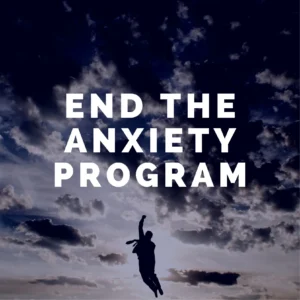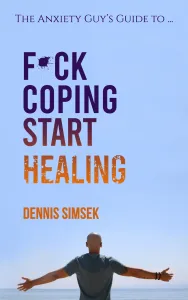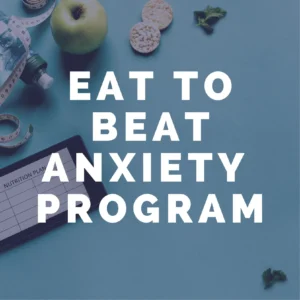I’m Dennis Simsek. Welcome back, I know it can take real effort just to press play, so thanks for being here. In this post I’ll break down some of the neuroscience and practical psychology behind health anxiety, explain how wearables and digital tools can help or hinder, and give you a very small, doable set of experiments to try this week. I’ll keep this in first person and practical, the same way I talk on the podcast.
How Fear-Memory Networks Work
Your brain learns. When you’ve had a scary health moment, a panic attack that felt like a heart attack, or watching a loved one suffer, your brain doesn’t only store the event. It wires that memory together with fear. Later, a harmless chest flutter or a single word (like “heart attack”) can light up that entire network the way a sensitive smoke detector blares when you’re just toasting bread.
I want to be clear: this is not imagination. The brain built a structure that fires automatically. That’s why the anxiety feels immediate and real, even when nothing dangerous is happening. The good news is that these fear networks can be softened. Every time you notice, name the pattern, and choose a different response, you weaken that automatic wiring.

What rewiring looks like in daily life
- Notice the trigger (body sensation, thought, word).
- Name it as a memory-based alarm, not proof of danger.
- Stay present and let the alarm sound without instantly acting on it.
- Over time the signal becomes less automatic.
Why Worry Keeps You Stuck
Health anxiety isn’t only about symptoms. It’s also about what you believe worry does for you. I used to believe that if I stopped hyper-monitoring I’d miss something important, that my worry was the thin shield between me and catastrophe. That belief kept me exhausted and small.
When worry is treated like a lifesaving behavior, relaxing can feel wrong. That’s where metacognitive work comes in: it’s not the content of the worry we target, it’s the meaning we attach to worrying itself.
Metacognition: The Fear of Not Worrying
Common metacognitive beliefs look like this:
- “If I don’t keep checking, I’ll miss something.”
- “Worry protects me.”
- “Relaxing means I’m being reckless.”
I challenge those beliefs by asking: has worrying actually kept me safe, or has it mostly kept me trapped? Opening that question creates room for new learning.
Wearables: Help or Harm?
Smartwatches and trackers give heart rate, sleep scores, and stress metrics. That data can be useful, it can catch patterns (like increased heart rate before you even notice anxiety) and help you act early with breathing or grounding.
But there’s a downside: these devices can become the new Dr. Google. Checking your watch fifty times a day turns every spike into “evidence” of danger. The data becomes a verdict about your health instead of a compass to guide you.
Setting boundaries with devices
- Ask: is the device serving you or are you serving it?
- Try a simple rule: check devices once in the morning and once at night.
- Use data to inform gentle adjustments (sleep hygiene, breathing), not to escalate reassurance-seeking.
Digital Tools: VR, Chatbots, and Exposure Practice
There’s a new wave of self-guided digital tools, VR exposure apps that simulate a doctor’s office, CBT chatbots that coach you through an anxious moment, and exposure modules you can practice on your own. For people who can’t access therapy, these tools can be powerful practice spaces.
They’re not magic. Think of them as training wheels: safe, repeatable places to practice facing triggers and trying new responses, so your real-life nervous system can start to relearn what’s safe.
How I recommend treating digital tools
- Use them as experiments, not cures.
- Treat in-app exposure like homework for your nervous system.
- Combine digital practice with real-world experiments (more on those below).
Practical Steps to Retrain Your Brain
I want you to walk away with small, immediate actions, things you can actually try this week.
Small experiments to weaken memory networks
- When a symptom triggers you, pause and ask: “Is this about now, or is my brain pulling from an old memory?” Name it out loud: “That’s my alarm pulling from memory.”
- Write down one belief about worry (e.g., “Worry keeps me safe”). Test it gently: when have I worried and nothing bad happened? What did worry actually do for me?
- If you use a wearable, set a boundary: check it once in the morning and once at night — that’s it. Use it as a compass, not a verdict.
- Try one self-guided digital tool as an experiment, a VR exposure module or a CBT chatbot, and treat it like practice, not a cure. Notice what you learned about your reactions.
Final Thoughts: From Fear to Safety
Your brain isn’t broken. It’s been overprotective. It built fear networks to try to keep you safe. The same brain that learned to overprotect can learn different responses with patience, awareness, and self-compassion.
You’re not hopeless, you’re hopeful. Start with small steps: notice a memory, question a belief, set a boundary, and experiment gently. Those tiny changes add up.
If you want more structure
If you want a guided, day by day plan, check out the Health Anxiety Recovery Program at anxietyguyprograms.com. That’s where I put a full, structured pathway together, daily guidance so you don’t have to invent the steps yourself.
Thank you for spending time with me here. Healing isn’t about becoming fearless it’s about learning to see safety again, even when fear shows up. You’re not alone, and you’re more than anxiety. Share this with someone who might need it, and I’ll see you next time.




